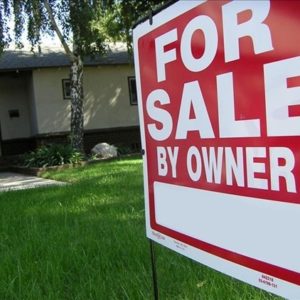In less than two months, more than 30 million Americans have lost their jobs and filed for unemployment, businesses ranging from restaurants to retailers to sports events are virtually shutting down, and more than half the work force is working remotely.
For mortgage firms like mine, this is a Charles Dickens moment: “It was the best of times, it was the worst of times.” Low mortgage rates mean lenders are busy, unlike many other businesses. But new risks and burdens, combined with employees operating from home, are creating unprecedented new challenges.
First, it wasn’t hard to foresee that mortgage default rates would balloon. So, Congress stepped in to adopt as part of the CARES Act a forbearance option for all borrowers that have a mortgage loan with FHA, Fannie Mae, Freddie Mac, RHS, or VA.
A borrower merely has to contact their servicer and submit a statement that they are experiencing “hardship”— a term which is neither defined or subject to scrutiny by their servicer. The borrower may request up to six months of forbearance — a fancy term for saying they don’t need to make any mortgage payments.
And, they can ask to extend this for an additional six months on top of that. Finally, servicers can’t impose fees, penalties, or additional interest because of a borrower’s failure to make mortgage payments.
What has this meant in practice? For borrowers that lost their job, it is a lifeline. Hopefully, in the near future they can regain their job, resume mortgage payments, and eventually repay the payments they missed (yes — they have to pay these back).
However, other borrowers who arguably can afford their mortgage payments are using this as a payment holiday. Since they have to pay this back, it is not clear this is good for the borrower. In practice, it is creating market dislocations that hurt those borrowers seeking a new mortgage loan.
Why is this so? First, it creates new risks for lenders like Absolute Mortgage. When we originate a new conventional (GSE) loan, it takes time to collect enough of these loans to sell to an investor or aggregator, which in turn sells them to Fannie Mae or Freddie Mac.
The problem is that with the new forbearance right, even a loan that is properly underwritten at time of closing can result in a borrower exercising their forbearance after the closing but before Fannie or Freddie buy the loan.
Fannie and Freddie don’t want to buy these loans — and aggregators don’t want to get stuck with if Fannie or Freddie won’t buy them. So ultimately it is the loan originator that gets left holding the bag.
For correspondent lenders, this means big losses on loans they Fannie or Freddie to purchase, it means servicing loans the firm was not set up to service, and it means diminished warehouse loan capacity to do new loans.
A few weeks ago, Fannie and Freddie did announce they would buy these types of loans — but with a big catch. Fannie and Freddie are going to charge up to a 700 basis point LLPA to buy a loan in forbearance.
For a lender like Absolute, that means a loss of 7 percent per loan. For aggregators, it means an aversion to buying loans from lenders, causing major dislocations in the market for new mortgage loans, particularly in the cash-out refi market.
What can be done to stabilize things for borrowers? The Community Home Lenders Association (CHLA), where I serve on the board, has a few suggestions. Early on, CHLA pressed Fannie and Freddie to buy properly underwritten loans that then go into forbearance without imposing high LLPAs — thereby fulfilling their congressional mission to support the market.
CHLA is also proposing that borrowers should have to document hardship when they take out a new loan — which would reduce the volume and impact of forbearance on new loans.
A second big problem in the market is felt by mortgage loan servicers.
With the forbearance option, Congress is essentially asking servicers to act as bankers to borrowers’ missed mortgage payments, since servicers must advance funds to MBS pools to ensure timely payment.
However, most servicers are not banks and can’t use FDIC-insured deposits or FHLB advances.
Ginnie Mae and Fannie and Freddie have stepped up to provide some liquidity. But what is needed is for the Federal Reserve to provide a liquidity facility for all non-bank servicers to help with the tsunami of missed payments caused by COVID-19 and the forbearance option.
Finally, what is in the future for our industry? We need to get families back out looking at and buying homes, to make sure our housing markets are stable. A key component of that is a healthy mortgage market that is not unduly stressed by the impact of COVID-19.
Secondly, as families regain their jobs, mortgage servicers face the labor-intensive task of conducting loss mitigation on millions of loans — recasting the missed payments as due at the end of the existing loan or modifying the loan terms.
As Washington turns its focus to an economic recovery from the COVID crisis, so too should federal mortgage officials. There should be an alternative to loss mitigation when a borrower regains their job and resumes mortgage payments.
Such borrowers should be eligible for a new mortgage loan refinance — notwithstanding the normal underwriting prohibition against loans to borrowers that recently defaulted on their loans.
I was pleased to see CHLA call for this. This is really just a variation on the GSEs’ highly successful HARP program after the 2008 crisis — except the exception is a temporary job loss instead of the loan being underwater.
All Americans face the dual challenges in the coming months of trying to stay healthy, while trying to resume some modicum of their normal former lives.
Those of us in the mortgage industry need to do our part to help the nation achieve these goals.

